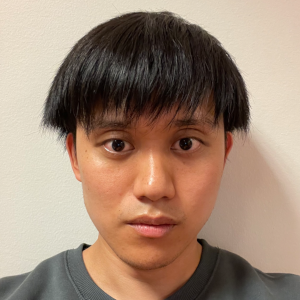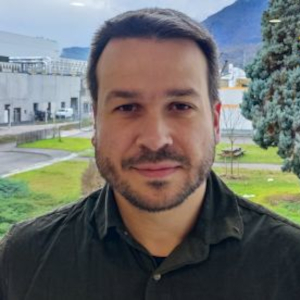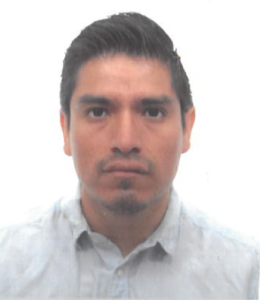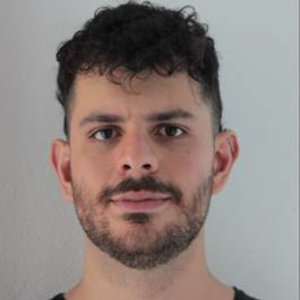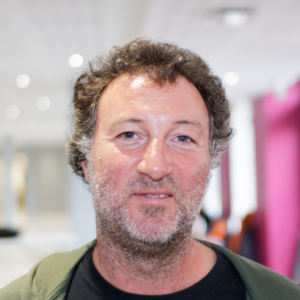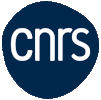Overview
Our team aims at manipulating spins currents in nanostructures, in particular in quantum materials with Dirac fermions, such as topological insulators or Weyl semimetals, or at oxide interfaces. Some important aspects of future spintronics devices, such as the efficient spin-charge interconversion at interfaces or the ballistic transport of spin states for quantum interconnects, are studied by magneto-transport measurements.
Research topics
Spin-Charge interconversion
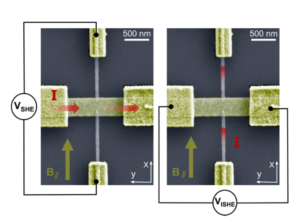
Nanostructure made of a horizontal stripe of spin Hall effect material, with two vertical ferromagnetic electrodes to probe the spin accumulation or to inject spin currents. The nanostructure allows probing both the charge-to-spin (left) and spin-to-charge (right) conversions due to the spin-orbit coupling.
Control of magnetization
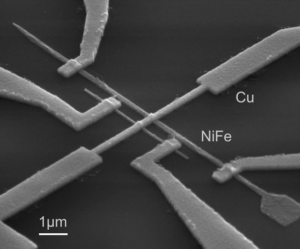
Nanostructure possessing NiFe nanowires, in which magnetic domain walls can propagate. When located at the vicinity of the Cu nanowire, the domain wall can be used to inject or detect pure spin currents.
Ballistic spin currents
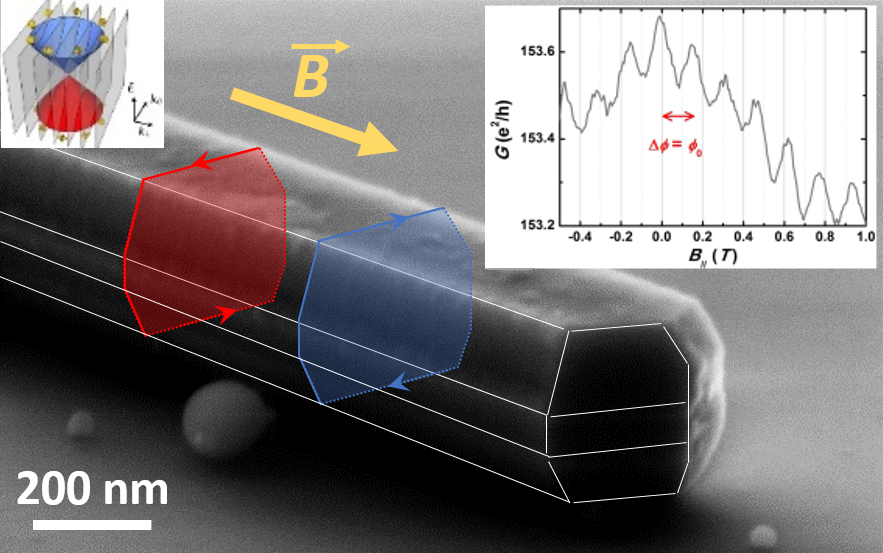
The ballistic surface Dirac fermions in a 3D topological insulator propagate on the cristal faces of a quantum wire. The well-defined cross section gives flux-periodic Aharonov-Bohm oscillations of the resistance, due to quantum interference, for a magnetic induction applied parallel to the nanowire. The spin-helical surface modes offer new possibilities to build quantum spintronics devices of simple geometry, either for dissipationless long-range interconnects or local spin filtering controled by a magnetic field or an electrostatic gate.
The team
Former members
Post-docs
- Yu FU (2015-2016)
- Juan Carlos ROJAS SANCHEZ (2010-2013)
- Yu FU (2015-2016, 2018-2019)
PhDs
- Andrei Mihai (2006-2009)
- Van Dai Nguyen (2009-2012)
- Piotr Laczkowski (2009-2012)
- Williams Savero-Torres (2011-2014)
- Pham Van Tuong (2014–2017)
- Gilles Zhand (2014-2017)
- Toshiki Gushi (2016-2019)
- Paul Noël (2016-2019)
- Aoyu Tan (2018-2021)
- Valentin Labracherie (2017-2021)
- Maxen Cosset-Cheneau (2019-2022)
- Sambit Ghosh (2019-2022)
Internships
- Williams Savero-Torres (2011)
- Gilles Zahnd (2014)
- Paul Noël (2016)
- Maxen Cosset-Cheneau (2018)
- Timothé Faivre (2009)
- Hélène Durand (2005)
- Andrei Mihai (2006)
- Carl Naylor (2011)
- Quentin Thiburce (2013)
- Clément Nguyen (2013)
- Sarah Ferry (2009)
- Cédric Mannequin (2008)
- Quentin Riffard (2010)
- Willy Lim (2016)
- Matthieu Praquin (2018)
- Marie-Paule Okinda (2020)
Visitors
- Sara Varotto (2019-2020)
Projects
- ANR Contrabass (2020-2023)
- ITN H2020 Spears (2021-2024)
- ANR Oiso (2017-2021)
- ISP Idex UGA DOMINO (2018-2021)
- FET Proactive H2020 Tocha (2019-2023)
- IRS Idex UGA (2017-2020)
Partners
- Tsukuba University (Japan)
- Unité mixte de Physique CNRS/Thalès (Orsay)
- Néel Institute (Grenoble)
- Leti (Grenoble)
- Institut Jean Lamour (Nancy)
- Leibniz Institute IFW (Dresden)
- Technical University (Dresden)
Recent news
- Masters thesis projects for Spring 2020 (September 30th, 2019)

You find here the list of proposals for Master-2 internships to take place at Spintec during Spring 2020. In most cases, these internships are intended to be suitable for a longer-term PhD work. Interested Master-1 ... - Mapping spin-charge conversion in a topological oxide 2DEG (September 16th, 2019)

Spin-charge conversion phenomena harnessing the spin orbit coupling are promising for the future of spintronics, allowing in one way (charge–to-spin) the generation of torque on magnetic elements and in the other way (spin-to-charge) the detection ... - Seminar – Discovery of quantum confinement effect in sputtered topological insulator films and observation of room-temperature high spin-orbit torque (September 04th, 2019)

On Thursday September 26 we have the pleasure to welcome Prof. Jian-Ping WANG (University of Minnesota, MN, USA). He will give us a seminar at in CNRS Building A at 10am in the framework of ... - Habilitation Defense – Spin currents and spin-orbit coupling (December 20th, 2018)

On Wednesday 9 January 2019 at 13:30 in , Amphithéâtre du CNRS (Bat Administratif – Tour A), Laurent Vila CEA/SPINTEC-Univ. Grenoble Alpes defends his habilitation (Habilitation à Diriger des Recherches, HDR), with title: Spin currents and ... - Seminar – Topological spintronics (November 20th, 2018)

On november 28, We have the pleasure to welcome Bertrand Dupé from INSPIRE Group, Institute of Physics, Johannes Gutenberg University Mainz, Germany. He will give us a seminar at 11:00, CEA/Spintec, Bat. 1005, room 434A ...







